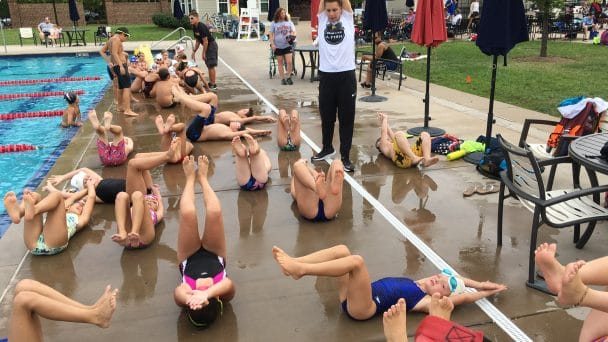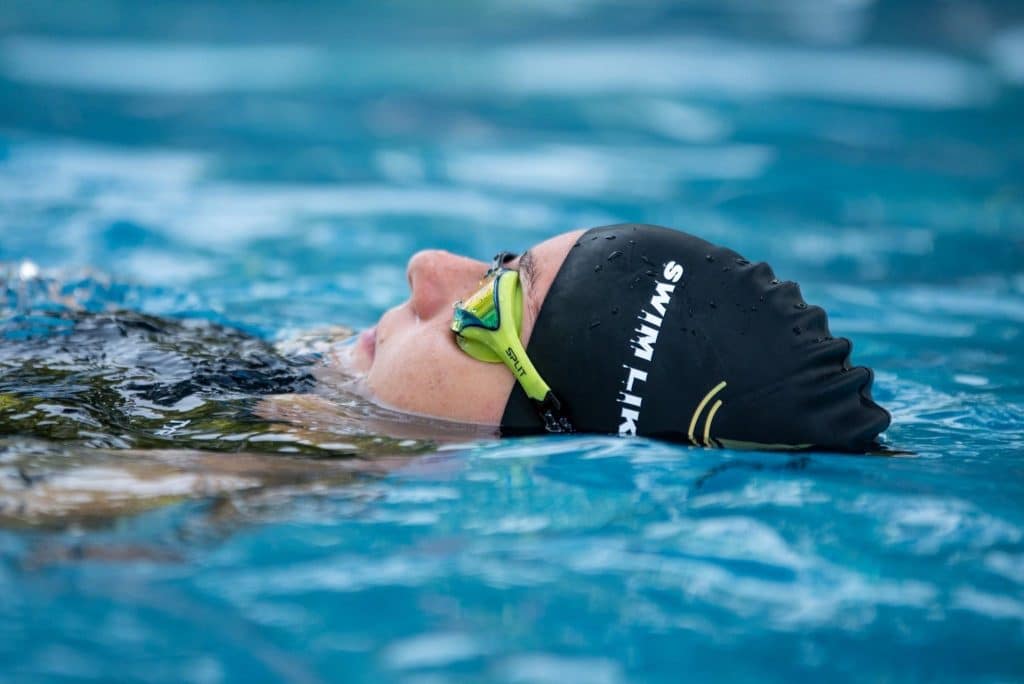We’ve ALL been there. After a nice dive into the pool, BOOM, Goggles down. They’re either around your neck or heading that way and allowing a rush of water to flow straight into your eyes while they do. Although it’s important to stay calm, the question “What Do I DO?!” is echoing throughout your thoughts. The options aren’t great. You can hobble along during the race, all the while manipulating your body position to control how much water gets into your eyes. Or you can shut your eyes, say “screw it” and keep on going. Either way, not good options. In Part III of our blog series on swimming goggles, we will give you some helpful tips about what to do when your swimming goggles leak.
(To get you caught up before we dive into Part III, catch up on Part I and Part II from our series on swimming goggles.)
Let’s Get Started!
Chlorine and the human eye don’t mix well. Every swimmer, no matter their age, know the harsh feeling of stinging eyes from over-exposure to chlorine. This is one of the main reasons goggles were invented! They allowed swimmers to train harder and longer. But, chlorine exposure is still a problem today. Since we practice with goggles, we’re oftentimes not prepared when the inevitable happens. So what DO YOU DO?
1.) PERFECT Your Stroke Counts
Have a favorite race or two? Those are the races you should know like the back of your hand. Start REALLY honing in on your stroke counts for 25’s and 50’s. Know how many strokes it takes for you to swim a FULL 25, how many from the 15M Mark, and how many from the Flags. Be able to swim your race so well in your head, you could almost do it in your sleep.
2.) Train WITHOUT Goggles
Every so often, it’s good to get a swimmer to understand the FEEL of what it would be like to swim without goggles. Spoiler Alert: it is possible to swim without them. It’s just uncomfortable. Have your swimmers (contact wearers included) look for the color markings on the bottom and the wall when training without goggles. These markings will be their indicators of where they are in the pool and will help come a disaster during race time.
3.) Relax
Just like most things in life, this is a lot EASIER said than DONE! If you’re in the middle of one of your biggest meets and your goggles fall off or start leaking, it is best to keep your cool. The moment you start to freak out is the moment that the issue compounds. Your technique will start to fail while you expend extra energy on things you can’t control. Remember, you’ve only got so much energy to swim the race! Take a deep breath and tell yourself you can do this, then swim on your merry way.
ABSOLUTELY DO NOT start swimming with your head up and/or stop in the middle of the pool. Give yourself a chance in the race before you give up.
Dryland Season Plan

With Dryland training showing to be a MORE and MORE valuable asset to clubs, we put together a 4 and 7 Month Dryland Season Plan to help you get started.
4.) Don’t Fix Them @ The Wall
While it’s tempting to mess around with your goggle strap, cap, or goggles themselves, this is costing you valuable time and energy. The amount of time it’ll add to your race is not WORTH the stop at the wall. Just go as fast as you can and worry about grabbing them from the bottom or taking them off your neck when you get out.
5.) Put Them UNDER Your Cap
I always tell my age-group swimmers, “Wear Your Goggles UNDER Your Cap!” This helps keep their goggles more secured, especially the elastic straps with the black button you push to either loosen or tighten them. You don’t necessarily have to train with them under your cap, but keeping them under your cap while you race will help keep the straps from moving on entry from your dive.
6.) Buy Goggles That Are Custom To YOU
Have you ever heard of custom Goggles? They’re relatively new to the swim world thanks to THEMAGIC5 Swimming Goggles! This company uses a face scanning technique called Optimal Fitting Technology in order to guarantee a perfect fit to your face. That way, the suction isn’t too intense on your face, and your eyes get plenty of oxygen. Imagine swimming leak, pain and distraction free!
What To Do If Your Swimming Goggles Leak! (They WILL)
While I know it can be hard to keep your composure in these situations, it’s worth it. The ability to stay calm under pressure is actually a testament to what kind of swimmer you are. You’ll learn a lot about what you’re made of when you hit adversity. (And having your goggles leak during a race definitely counts as adversity!).
It makes me think about Anne-Marie Botek (a former teammate of mine at UGA) whose swimsuit ripped a million times during the era of the LZR Racers. At that time, USA Swimming allowed a SIX MINUTE grace period for swimmers to get into NEW suits if theirs ripped before going onto the blocks. Any swimmer who swam during that era KNOWS that is NOT enough time to change out of one and put on another! I used to get to warmups over another hour early during that time, so I had time to put on my suit.
I remember Anne-Marie’s suit ripping before one of her races. Our entire team ran up with towels to surround her and her lane to avoid the cameras zooming in on the tear. At that moment, Anne-Marie stood up and swam lights out with a ripped suit. Although it wasn’t her goggles, she applied the same principles of what to do if your swimming googles leak to her suit ripping!

Be Prepared
While I don’t wish any of these experiences on any of you, it is good to be prepared. Things do happen. Caps rip, suits rip, goggles leak, goggles fog up, and both can fall off. It’s not fun, but it is part of the sport.
Stay ahead of the curve (and your competitors) by being ready for when these moments do happen to you. If you’re in the sport for the long haul, hopefully it’s one of many races for you. Give it your best shot and come out feeling great about what you left in the pool! With practice, you’ll know what to do if your swimming goggles leak!
Until Next Time,
Abbie Fish

2 Responses
Keep in mind that many of us old folks, still swimming Masters, never had goggles, lane lines, backstroke flags, T markings on the bottom or the wall, flip turns, or swim caps! We still finished our races! But with very bleary eyes. (Some of us even put olive oil drops into our eyes before practice to fend off chlorine and salt water. One of the Hall of Fame pools was a 55 yard long course salt water pool where many northern colleges got together over Xmas break to workout in the sun.)
Knowing this history is so important! Thanks so much for writing this out and letting us not forget!